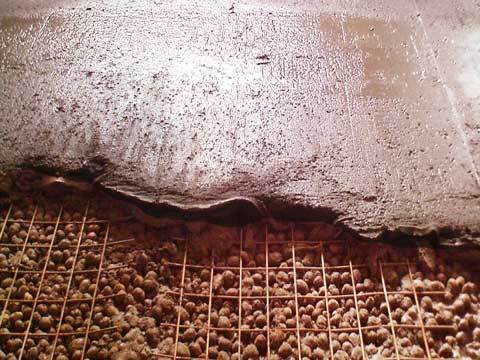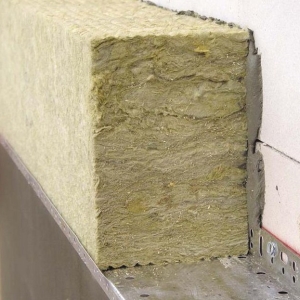So sue and comfort reigned at any time of the year in your house, it is necessary to warm it carefully. Along with the roof, windows, and walls, the floors will be taken out of the house about 40% of heat. This problem is most relevant for owners of residential buildings on unprotected cold soil. In this case, even the most advanced heating system will not help preserve heat for a long time. It will not be saved by the presence of a cellar or the ground floor. High-quality and competent floating floors with their own hands will save family members from discomfort and will save the family budget.
How to insulate floors in a private house - choose the heat insulating material
Most often, the owners are used for the insulation of walls and floors of clayzit, penplex, mineral wool and foam. The choice of these materials is explained by their available cost, simplicity of installation and longevity of the service.
Mineral wool
In recent years, this material has become a traditional insulation in the construction of frame houses. We produce it twisted into rolls either in meter plates. With high-quality installation, the material is capable of listening to 10-15 years. Ming wool is not afraid of sudden temperature drops and absolutely fireproof. Good sound insulation, low heat resistance and ease of installation are the main advantages of thermal insulation material.

The only drawback is vapor permeability. During installation, it is necessary to protect the material with a high-quality layer of waterproofing. Otherwise, the fibers of the Ming of Wati wrapped, they will fall and quickly lose their basic properties.
Styrofoam
Polystyrene foam is used everywhere. The main advantages are:
- Low cost.
- High heat-sound insulation.
- Moisture resistance.
- Does not rot, not exposed to fungal defeats.
- Easy installation.
- Long service life - 25 years.
Choosing from purchase can negative aspects of plastic - fragility, flammability, harmful decay products. In addition, the foam is the favorite delicacy of rats and mice. The insulation is produced from raw materials of a different composition, which is why its density can differ significantly. The masters advise you to choose plates with a thickness of at least 30-50 mm.

Ceramzit
Clay coarse granules are the oldest and most reliable option of the insulation of a private house. The material has the smallest cost among its fellows, but it is not inferior to them in the heat shielding properties. Its distinctive feature is the preservation of heat, even when humidity appears. In addition, the ceramzite is durable (more than 50 years), environmentally friendly, fire-resistant and very durable. The only condition for its impact is the imposition of an abundant layer - at least 20 cm. 
Penoplex
The polystyrene foam has fallen into the building materials market recently, but has already managed to gain popularity among consumers. Painoplex is favorably different from mines of wool and foam strength, durability and environmental friendliness. The material has high frost resistance: 5 cm of material replace the brickwork 1.5 m. To its advantages also includes a low level of countertime and moisture absorption. Disadvantages - the fire is afraid and enjoys "love" in rodents.

How to insulate floors in a private house - installation of mineral wool and foam plastic on lags
The floors in the wooden country house it is advisable to warm up by the tamper of the insulation in the lags. Before working, it is necessary to remove the floor covering, open the floorboards and get to the lag.
- The empty space between the floor and the ground is desirable to be covered with clay, rubberoid or sand.
- Next, the lower tiers of the lag are littered with the selected waterproofing. The cheapest option in this case will serve a thick polyethylene film.
- The film is performed on the film of mineral wool. The ramming is better to perform in 2-3 layers to hide all the joints.
- On top of min, cotton wool is again closed with waterproofing.
- The process of insulation on this is considered complete.
When applied as a ceramic insulation, the cake in lags will be similar - film, crumples, film, overlap, clean floor.

How to insulate floors in a private house - installation of claying with a tie
Fix the insulation concrete is solved by a few owners of private houses. But to perform a concrete screed and purchase a warm floor at the outlet, for everyone. You will need - sand, gravel, insulation, beams, reinforcement grid, shovel, moistureproof film. The process of laying a concrete floor is long and requires special actions.
Preparation
Before performing work, old floors are completely removed, if some of them are filled with concrete, take the helpers perforator, scrap or hammer. Next, it is necessary to clean the surface from the garbage, remove 10-15 cm of the upper soil or vice versa, flood with sand or rubble.

Laying waterproofing
Waterproofing will protect the house from the penetration of dampness and condensate. For these purposes, laid a dense polyethylene film or rubberoid on the aligned surface. The cloth is lined with the allen on the walls, better in several layers.

Blackspreadmill
Then the loaf rails are installed and the first layer of concrete is poured.

Laying Keramzita
A fully dried draft floor is poured with a smooth layer of clay, put the reinforcing mesh and pour the purple floor. The solution dries finally after 10-14 days, only after this period you can perform a finishing finish.
































Very interesting and useful. Thank you to the author. Timely for me! I plan from spring expansion and insulation of the country house. It will be interesting to all with regard to this topic.